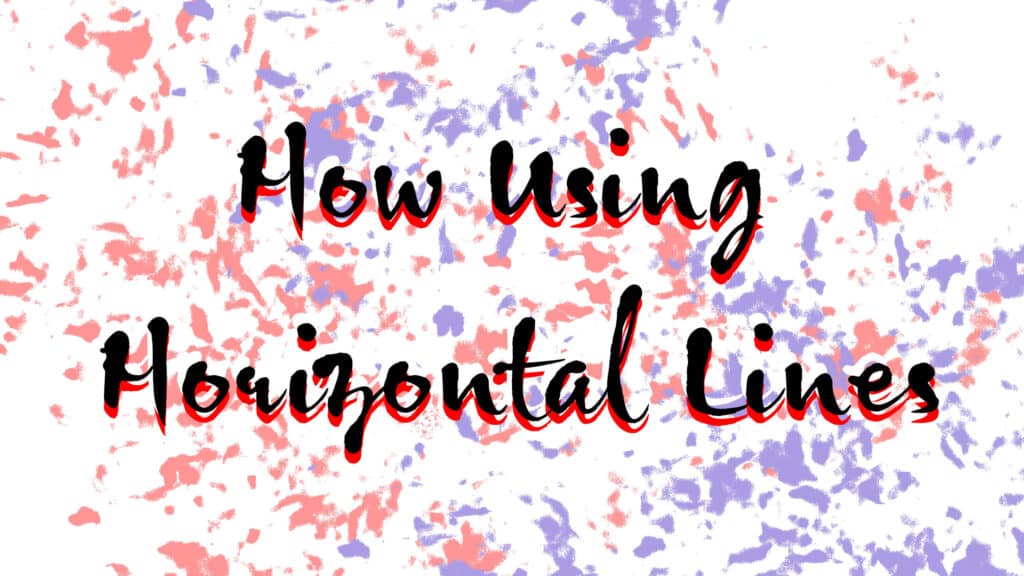How to Use Horizontal Lines
Horizontal lines exist in everything we see and are the basis of every composition. Even images without lines are constrained by the horizontal or vertical frames that contain them. It is important to understand the effect of a horizontal line in a photograph to better understand how to use it effectively.
Horizontal Lines
Using horizontal lines is a great way to group different elements in an image and help establish details in the photo, such as orientation and position. When it comes to composing a photo, horizontal lines are pretty bland and uninteresting – after all, you’ve seen them everywhere. To make these photos more interesting, you must try to find a way to put these lines to good use.
Horizons
Unbroken horizons are often quite boring to look at. Check out the first photo below; it’s dull and uninteresting. The second photo, on the other hand, takes the horizontal line of the water horizon and cuts it with the foreground, making it a much more interesting photo.
Stability
Horizontal lines give a sense of stability due to their relationship to the horizon and the ground on which we are standing. When you combine this material with a material known for its durability, you can create a photo that really stands out for its stability, like the one below.
Perspective
If you photograph a single flower, you will have a hard time seeing horizontal lines, but as you capture multiple subjects and line them up, you’ll start to see an effect similar to the one below. Perspective is the most important part of this photo; if there’s no height on the crop, you won’t see lines like that. The farther the flowers are from the camera, the more straight lines appear because the perspective is flattened. To understand how it works, I recommend reading my article on focal lengths, but here is a photo I used to best illustrate my point. Here is another image of a group of buildings taken from a great distance. You can see the lines that have disappeared from different angles, in reality, appear directly in the image.
Viewpoint
Viewpoint is similar to perspective in that it relates to the viewing angle. However, when I talk about perspective, I’m talking about how we look at lines rather than taking something out of line and making it appear as if it were. Height is a very important factor for this to work because it shows you lines you wouldn’t otherwise see. In a built-up city like Washington DC (where the photo was taken below) it’s hard to find a straight skyline, but when you get the advantage of altitude, a very clear horizon appears. presently. This also presents additional lines of roads and paths in the image. Photos with a skyline show a strong sense of place.
Contrast
Even the slightest contrast in the image will create lines, as shown in the image below. Ripples of water moving away from the boat cast shadows to one side, creating many horizontal lines in the water. Contrast (such as light and dark, big and small, light and blur) has the greatest effect when placed in the foreground in an image because that is where it will appear most. Photos with good contrast have a strong sense of direction and movement.
Note: If you want to make some adjustments to the photo just let me know. I can do it for you at a very low cost. You can hire me to edit your photo
latest post
- What is Midjourney
 Discover the capabilities of Midjourney AI, learn how to effectively utilize the platform, and explore the advantages and disadvantages of the Midjourney AI image generator across its different pricing options.
Discover the capabilities of Midjourney AI, learn how to effectively utilize the platform, and explore the advantages and disadvantages of the Midjourney AI image generator across its different pricing options. - Brand identity elements
 In the vast marketing universe, imagery is pivotal in establishing and nurturing a brand’s identity. A brand’s visual choices are not merely aesthetic decisions but strategic moves that can significantly influence perception and performance. This Picfixs article explores the intricacies of selecting imagery that complements and enhances a brand’s essence, ensuring it resonates with the… Read more: Brand identity elements
In the vast marketing universe, imagery is pivotal in establishing and nurturing a brand’s identity. A brand’s visual choices are not merely aesthetic decisions but strategic moves that can significantly influence perception and performance. This Picfixs article explores the intricacies of selecting imagery that complements and enhances a brand’s essence, ensuring it resonates with the… Read more: Brand identity elements - 100 Best Mountain Captions and Mountain Quotes for Instagram
 Ready to scale new social media heights? Look no further than this treasure trove of 100 exhilarating captions and quotes, handpicked for your Instagram mountain posts!
Ready to scale new social media heights? Look no further than this treasure trove of 100 exhilarating captions and quotes, handpicked for your Instagram mountain posts! - Symmetry in Photography: A Creative Approach with Examples
 Delve into the enchanting realm of symmetry in photography as we showcase mesmerizing examples on our website. Experience the allure of perfectly mirrored images!
Delve into the enchanting realm of symmetry in photography as we showcase mesmerizing examples on our website. Experience the allure of perfectly mirrored images! - 11 Quarantine Photoshoot Ideas to Try at Home for Amazing Photos
 Looking for unique photoshoot ideas during quarantine? Explore the 11 creative suggestions that will help you capture unforgettable moments at home.
Looking for unique photoshoot ideas during quarantine? Explore the 11 creative suggestions that will help you capture unforgettable moments at home.


